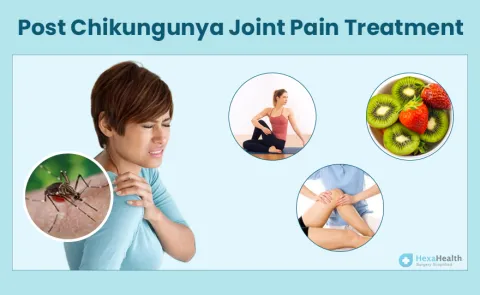Introduction: Understanding Chikungunya and Its Impact
Chikungunya is a viral disease spread by mosquitoes. It causes fever and severe joint pain, which can last for weeks or even months. This pain can make daily tasks hard. While there is no cure for Chikungunya, you can take steps to ease the pain and feel better. In this article, we will go over simple ways to manage the discomfort at home and know when to get help from a doctor.
Section 1: Understanding Chikungunya Fever and Its Symptoms
Chikungunya fever starts with a high fever that can last a few days. Along with the fever, most people feel intense pain in their joints, like in the knees, wrists, and ankles. Other signs include muscle pain, headache, tiredness, and sometimes a rash. The joint pain is often the worst part and can make moving around tough. Knowing these symptoms helps you understand what your body is going through and how to deal with it.
Section 2: The Role of Rest and Activity Management in Alleviating Pain
Rest is very important when you have Chikungunya. Your body needs energy to fight the virus, so avoid overdoing things. Lie down or sit when you feel tired. But don’t stay still all the time—light movement can stop your joints from getting too stiff. Try to balance rest with small activities, like walking a few steps around the house. This helps your body heal without adding more pain.
Section 3: Warm Water Therapy for Joint Pain Relief
Warm water can help soothe aching joints. Fill a tub or basin with warm (not hot) water and soak your hands, feet, or other sore areas for 10-15 minutes. You can also use a warm towel or heating pad on painful spots. The heat helps relax muscles and loosen stiff joints. Do this a few times a day, but stop if it feels uncomfortable or makes the pain worse.

Section 4: Anti-Inflammatory Diet and Nutrition
Eating the right foods can help reduce swelling and pain in your body. Focus on fruits like berries, oranges, and bananas, which have vitamins to boost your health. Add vegetables like spinach and broccoli, and eat nuts or fish for healthy fats. Avoid sugary snacks, fried foods, and soda because they can make swelling worse. Eating well gives your body strength to recover faster.
Section 5: Natural Remedies for Pain Relief
Some natural things can help with Chikungunya pain. Turmeric, a yellow spice, has properties that fight swelling. Mix a small spoon of turmeric with warm milk or water and drink it once a day. Ginger tea is another option—boil fresh ginger in water and sip it to ease pain. Always check with an adult or doctor before trying these remedies to make sure they are safe for you.

Section 6: Hydration and Its Role in Recovery
Drinking enough water is key when you’re sick with Chikungunya. Fever can make you lose fluids, and staying hydrated helps your body work better. Aim to drink 8-10 glasses of water a day. You can also have coconut water or clear soups to add more fluids. Staying hydrated can help reduce tiredness and keep your joints from feeling too stiff.
Section 7: Gentle Stretching and Exercise
Even though moving might hurt, gentle stretching can help your joints. Try simple moves like slowly bending and straightening your arms or legs. Don’t push too hard—stop if it hurts. Doing this for 5-10 minutes a day can keep your muscles from getting tight. Ask an adult or doctor for safe stretches if you’re not sure what to do.

Section 8: Over-the-Counter Pain Relief Options
Some medicines you can buy at a store might help with pain and fever. Acetaminophen (like Tylenol) is often used to lower fever and ease aches. Avoid medicines like ibuprofen unless a doctor says it’s okay, as they might cause other problems. Always follow the instructions on the bottle and ask an adult or doctor before taking anything.
Section 9: Topical Creams and Gels for Localized Pain
Creams or gels that you rub on your skin can help with joint pain in specific spots. Look for products with ingredients like menthol or capsaicin, which can make the area feel better. Rub a small amount on the sore spot, but don’t use too much, and wash your hands after. Check with a doctor if you’re unsure which one to use or if your skin gets irritated.
Section 10: Mindfulness and Stress Reduction Techniques
Pain can make you feel stressed or upset, which can make it seem worse. Try calming activities like deep breathing—breathe in slowly through your nose, then out through your mouth for a few minutes. Listening to soft music or sitting quietly can also help. These tricks won’t take the pain away, but they can help you feel more relaxed while your body heals.
Section 11: When to Seek Medical Help
Most people get better from Chikungunya on their own, but sometimes you need a doctor. Go for help if your fever stays high for more than a few days, if the pain gets much worse, or if you feel very weak or dizzy. Also, see a doctor if you have trouble breathing or notice a bad rash. It’s important to get checked if something doesn’t feel right.
Conclusion: Summary and Final Tips for Managing Chikungunya Pain at Home
Chikungunya can be tough because of the joint pain and fever, but you can manage it with simple steps. Rest a lot, use warm water for sore joints, eat healthy foods, and stay hydrated. Try gentle stretches, natural remedies, or safe medicines if needed. Keep stress low and watch for signs that mean you should see a doctor. By taking care of yourself, you can feel better while your body fights the virus.













